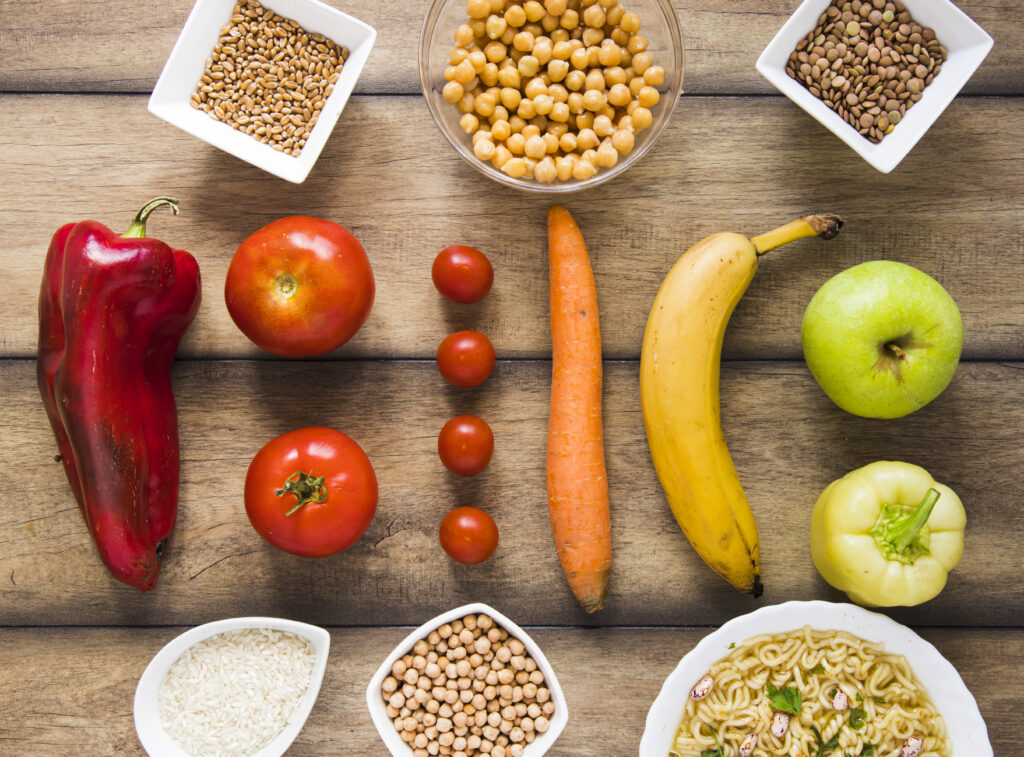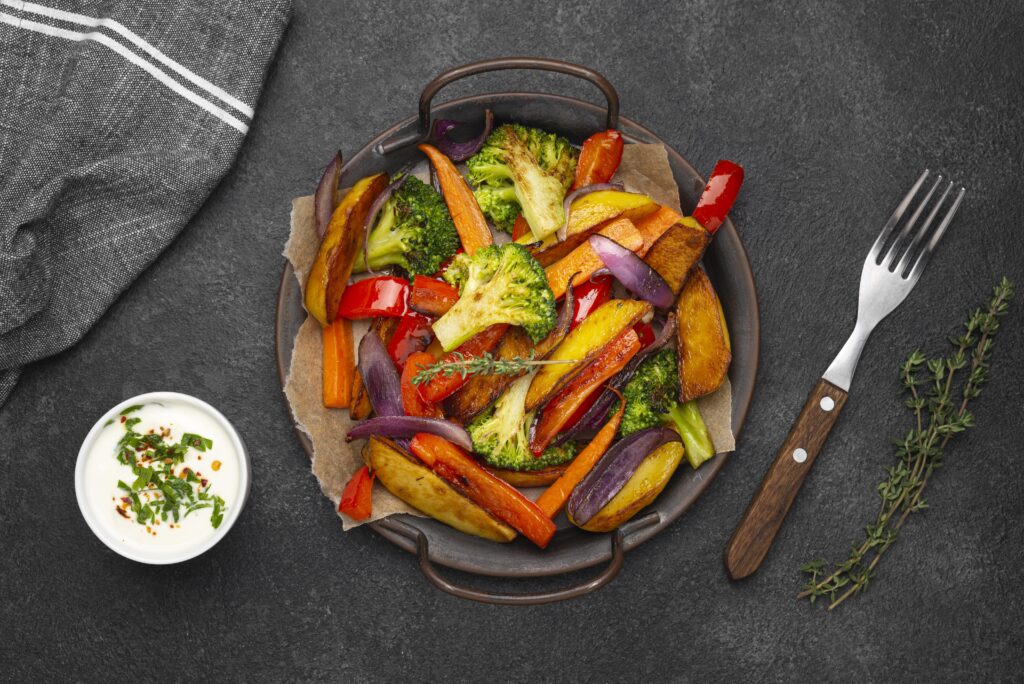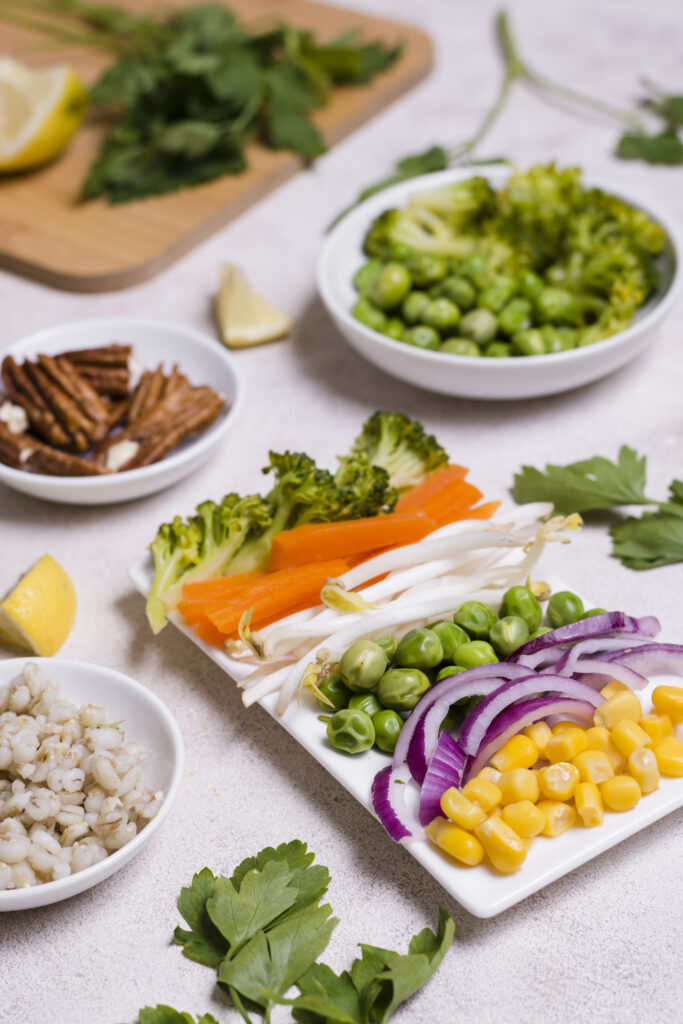
Are you struggling to lose weight without constantly feeling hungry? The concept of volume eating might be your best friend! Volume eating involves consuming larger portions of low-calorie, high-volume foods that keep you full and satisfied while helping you shed those extra pounds. In this comprehensive guide, we’ll explore:
- What volume eating is and how it impacts weight loss
- How to fill up without piling on calories
- Choosing low-calorie, high-volume foods that satisfy
- Smart strategies for portion control without feeling deprived
- Incorporating fiber-rich foods to enhance fullness
- Creating balanced meals that promote satiety and weight loss
- Practical tips for dining out while maintaining volume eating habits
So, let’s dive in and discover how volume eating can accelerate your weight loss journey!
Understanding Volume Eating and Its Impact on Weight Loss
At its core, volume eating revolves around the principle of eating more food while consuming fewer calories. This approach targets foods that have low calorie density but high volume. Essentially, you get to eat a larger amount of food without exceeding your daily calorie limits. Think about it—how much more satisfying is a big bowl of salad full of fresh veggies compared to a small slice of pizza? This method is both mentally and physically satisfying. When you fill up on low-calorie, high-volume foods, you’re less likely to feel deprived, which is key to long-term weight loss success.
How to Fill Up Without Piling On Calories
One of the smartest weight loss tips out there is choosing foods that fill you up but don’t pack a high calorie punch. Foods with high water content, like fruits and vegetables, are perfect for this. Watermelon, cucumber, and oranges are not only refreshing but also help you feel full longer. Adding high-volume foods to your meals can make a significant difference. For example, incorporating a side of steamed broccoli or a mixed veggie stir-fry can bulk up your meal without adding unnecessary calories. You can eat more and still lose weight—how amazing is that?
Choosing Low-Calorie, High-Volume Foods That Satisfy
When it comes to low-calorie foods that are also satisfying, the choices are diverse and delicious. Leafy greens like spinach and kale are excellent because they are super low in calories but very filling due to their fiber content. Another great option is broth-based soups. A big bowl of soup made with vegetables and lean protein can be an incredibly filling and low-calorie starter or even main course. Including fiber-rich foods like beans, lentils, and whole grains can also enhance fullness. They slow down digestion, helping you stay full longer and reducing the temptation for unhealthy snacks.
Smart Strategies for Portion Control Without Feeling Deprived
Portion control is vital for effective weight loss, but it doesn’t mean you have to feel deprived. One useful strategy is to use smaller plates and bowls, which can trick your mind into thinking you’re eating more. Another way to control portions without sacrificing satisfaction is to bulk up your meals with satiating foods like vegetables and salads. For example, instead of having a large serving of pasta, try having a smaller portion and adding a big salad or roasted veggies on the side. This way, you’re still enjoying your favorite dishes, just in a more balanced way.
Incorporating Fiber-Rich Foods to Enhance Fullness
Adding enough fiber to your diet is one of the best effective weight loss strategies. Fiber-rich foods such as whole grains, legumes, fruits, and vegetables not only fill you up but also help regulate your digestive system. Foods high in fiber tend to be more filling, which means you’re less likely to overeat. Try starting your day with a bowl of oatmeal topped with fresh fruits and nuts—it’s a delicious way to keep yourself full until lunchtime. Additionally, snacks like a handful of almonds or an apple can keep hunger pangs at bay between meals.
Creating Balanced Meals That Promote Satiety and Weight Loss
Creating balanced meals for weight loss is about combining low-calorie foods with enough protein and healthy fats to keep you full. A balanced meal might include a source of lean protein (chicken breast or tofu), a generous serving of vegetables (spinach, bell peppers, and carrots), and a portion of healthy fats (avocado or olive oil). This combination helps ensure that your meals are not only low in calorie density but also very satisfying. The key is to maintain a good balance so that your meals provide the necessary nutrients while helping you lose weight.

Practical Tips for Dining Out and Maintaining Volume Eating Habits
Dining out can be challenging when you’re trying to stick to volume eating habits, but it’s definitely manageable with a few strategies. One tip is to look for items on the menu that feature high-volume foods, like salads, soups, and grilled vegetables. Don’t hesitate to ask for dressings and sauces on the side to control added calories. You can also start with a broth-based soup or a salad to fill up before your main course arrives. Lastly, practice mindful eating by chewing slowly and savoring each bite, making it easier to stop when you’re full.
By employing these practical tips and strategies, you can confidently dine out while maintaining your weight loss goals through volume eating.
Volume eating is a powerful and sustainable approach to weight loss that allows you to eat more while consuming fewer calories. By focusing on high-volume foods, incorporating fiber-rich foods, and creating balanced meals, you can achieve significant weight loss without feeling deprived. Remember, the aim is to fill up with low-calorie foods that are both satisfying and nutritious. Whether you’re cooking at home or dining out, these strategies will help you stay on track and reach your weight loss goals in a healthy and enjoyable way. Here’s to enjoying your meals and shedding those extra pounds with ease!
